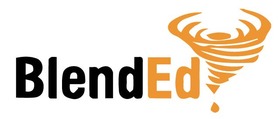BlendEd Best Practices - Pythagorean Theorem
Unit Title:
Title and Description
This unit is titled Pythagorean Theorem
In this unit students will learn a little bit about Pythagoras and will learn about the Pythagorean Theorem and many of its uses.
The
resource was submitted by Deb Bulin, Thayer Central Community Schools, as part of the Nebraska ESUCC Special
Project BlendEd Best Practices."
Content Area Skill:
Add Skill(s)
Pythagorean Theorem
Digital Age Skill(s):
Add Skill(s)
Skill #1
Skill #2
Duration of Unit:
10 days
Overview of Unit:
In this unit students will learn a little bit about Pythagoras and will learn about the Pythagorean Theorem and many of its uses.
Empower Learners:
Content Area Skills (NE and ISTE Standards):
8.3.3 b Apply the Pythagorean Theorem to find side lengths of triangles and to solve real-world problems.
8.3.3 c Find the distance between any two points on the coordinate plane using the Pythagorean Theorem.
Student Friendly Objectives:
8.3.3 b I can find a missing leg of a right triangle using the Pythagorean Theorem.
8.3.3 b I can find the hypotenuse of a right triangle using the Pythagorean Theorem.
8.3.3 b I can solve real-world problems using the Pythagorean Theorem.
8.3.3.c I can find the distance between any two points in the coordinate plane using the Pythagorean Theorem.
Empower Learner Activity:
Detailed Description:
Pre-Assessment - Pear Deck presentation so students can answer and draw on their computers.
https://docs.google.com/presentation/d/1XHKcBMHOXBzsgMPVqqzxXBPi4N769kbirOgab-dgmYg/edit#slide=id.p
Knowledge Application:
The purpose of Knowledge Application is to promote deeper-level learning through student creation of learning artifacts demonstrating both Content Area and Digital Age Skills. A key goal is to provide some degree of control over how students will show what they know.
Artifact Profile:
Title of the Artifact:
Pythagoras and the Pythagorean Theorem
Detailed Description:
Create a presentation (could be a poster, slides, etc) that includes:
5 facts about Pythagoras
1 person (other than Pythagoras) that proved the Pythagorean Theorem
An example of finding the missing hypotenuse - with all work shown to solve
An example of finding a missing leg - with all work shown to solve
An example of finding the distance between two points on a coordinate plane - with all work shown to solve
Two different word problems - with all work shown to solve
https://docs.google.com/document/d/1Gkei8MC3a-M4O2JPZQtCLWJKLL7s5L5PCHpapmsDv3U/view
Content Area Skills Addressed:
Include the content area skills
Content Area Skills Addressed: Pythagorean Theorem 8.3.3 b Apply the Pythagorean Theorem to find side lengths of triangles and to solve real-world problems. 8.3.3 c Find the distance between any two points on the coordinate plane using the Pythagorean Theorem. |
Digital Age Skills Addressed: 1. a., 2. b., 3. b., 4. a. and 4. b. |
Link to Rubric: https://docs.google.com/document/d/1O1tXndP09XR13ifmI8dWnCONNsED4VTtjU5IfrnCbPk/view |
Knowledge Deepening:
Detailed Description:
During Knowledge Deepening, the Content Area Skills required of the Learning Artifact are broken down into bite-sized tasks. A key goal is to provide some degree of choice over how students practice the Content Area Skills.
Tasks
List the separate tasks
Task 1: Choice Board - have to choose one of each color
Must Do’s: Pythagoras Reading and Quizizz over Reading |
May Do’s: IXLs, Homework Sums, Jenga, Math Lib, Word Problem Chain |
Resources: Link to Choice Board: https://docs.google.com/document/d/17J3yYb-abgE98yTZoypnm8WUe_vgm4lHxwT130dGMdo/view Math Lib: https://www.teacherspayteachers.com/Product/Pythagorean-Theorem-Math-Lib-754408 Pythagoras Reading: Historical Connections in Mathematics, Volume 1, Copyright 1992, AIMS Education Foundation, Fresno, CA, Pythagoras - The Master Teacher, pages 2 and 3. Quizizz: https://quizizz.com/admin/quiz/5c817c768bc58f001bac63eb/pythagoras Word Problem Chain: https://docs.google.com/document/d/110S75GFVPiLufrcjVoUP8sIz8gxE825T4HEJ2RHzgYM/view Homework Sums: https://docs.google.com/document/d/1p8JQefXw7o6s4_BKy05iTnjCT4Gv19mIBMeshAoJ2sY/view JENGA: Recording Sheet: https://docs.google.com/document/d/1iADateZpjiZvc2iTf34vIGaKQ7gDqnr5uB5jTEdjFaM/view (Use Word Problem Chain questions - cut out and have JENGA pieces numbered 1-12) |
Direct Instruction:
Detailed Description
Direct Instruction scaffolds the learning process for all students. A key goal is to incorporate BlendEd strategies to effectively differentiate instruction in order to maximize learning.
Learning Path:
Include in the table below the breakdown of each day of the unit.
| Day # | Description | BlendEd Model | Resources |
| 1-2 | Present Pear Deck slides as pre-assessment to see where students are. Introduce Pythagorean Theorem and work examples on second page in class Choose groups of 2 (1 group of 3 if odd number) and explain choice board for the following days |
Direct Instruction/Flex Model |
https://docs.google.com/presentation/d/1XHKcBMHOXBzsgMPVqqzxXBPi4N769kbirOgab-dgmYg/view#slide=id.p https://docs.google.com/document/d/1qBskLrEpG2-twWyXL5Xl8rM9JjWlLI4X0LCVBuM0hVY/view |
| 3-4 | Choice Board |
Choice Board |
https://docs.google.com/document/d/17J3yYb-abgE98yTZoypnm8WUe_vgm4lHxwT130dGMdo/view |
| 5 | Quiz - assign projects |
Assessment |
https://drive.google.com/file/d/1jRKKwGUUZobfwBgwmlkow7pKRsqWiCBh/view?usp=sharing |
| 6-7 | Work on projects |
Flex Model/Poster |
|
| 8 | Present Projects to the class |
Assessment |
|
| 9 |
Test Review |
Direct Instruction/Flex Model |
|
| 10 | Test |
Assessment |
https://drive.google.com/file/d/1m_NXO8hKo6PXXWHhJaM98eT1AyBCpbXh/view?usp=sharing |
Resources:
Provide a list of resources
